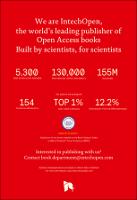Chapter Nanoparticle Formation by Laser Ablation and by Spark Discharges — Properties, Mechanisms, and Control Possibilities
| dc.contributor.author | Itina, Tatiana | |
| dc.contributor.author | Voloshko, A. | |
| dc.date.accessioned | 2021-06-02T10:07:34Z | |
| dc.date.available | 2021-06-02T10:07:34Z | |
| dc.date.issued | 2015 | |
| dc.identifier | ONIX_20210602_10.5772/61303_247 | |
| dc.identifier.uri | https://library.oapen.org/handle/20.500.12657/49133 | |
| dc.description.abstract | Mobile robot platforms have a wide range of hardware configurations in order to accomplish challenging tasks and require an efficient and accurate localization system to navigate in the environment. The objective of this work is the evaluation of the developed Dynamic Robot Localization (DRL) system in three computing platforms, with CPUs ranging from low to high end (Intel Atom, Core i5, and i7), in order to analyze the configurations that can be used to adjust the trade-offs between pose estimation accuracy and the associated computing resources required. The DRL is capable of performing pose tracking and global pose estimation in both 3 and 6 Degrees of Freedom (DoF) using point cloud data retrieved from LIDARs and RGB-D cameras and achieved translation errors of less than 30 mm and rotation errors of less than 5° when evaluated in three environments. The sensor data retrieved from three testing platforms was processed and the detailed profiling results were analyzed. Besides pose estimation, the self-localization system is also able to perform mapping of the environment with probabilistic integration or removal of geometry and can use surface reconstruction to minimize the impact of sensor noise. These abilities will allow the fast deployment of mobile robots in dynamic environments. | |
| dc.language | English | |
| dc.subject.classification | bic Book Industry Communication::T Technology, engineering, agriculture::TJ Electronics & communications engineering::TJK Communications engineering / telecommunications | |
| dc.subject.other | Self-localization, point cloud registration, pose tracking, point cloud library, robot operating system | |
| dc.title | Chapter Nanoparticle Formation by Laser Ablation and by Spark Discharges — Properties, Mechanisms, and Control Possibilities | |
| dc.type | chapter | |
| oapen.identifier.doi | 10.5772/61303 | |
| oapen.relation.isPublishedBy | 09f6769d-48ed-467d-b150-4cf2680656a1 | |
| oapen.relation.isFundedBy | FP7-NMP-2011-LARGE-5 | |
| oapen.grant.number | 280765 | |
| oapen.grant.acronym | BUONAPART-E |

